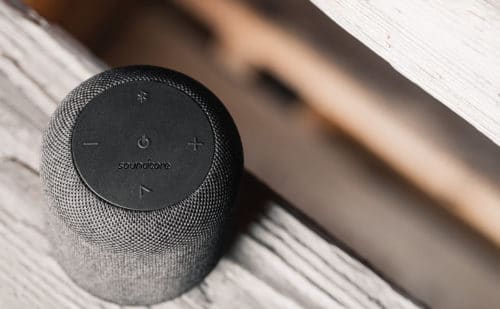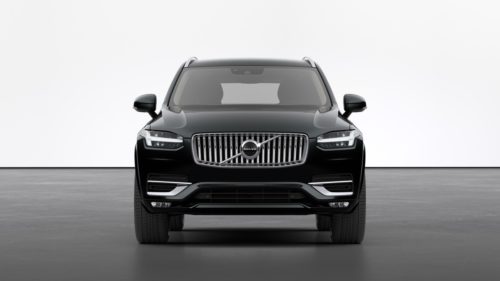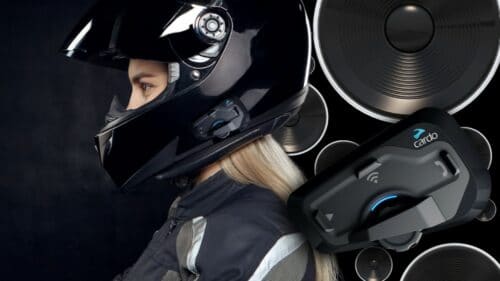The Role of Sound Design in Crafting Memorable Products
June 15, 2023
Why Sound Design Matters
In today’s increasingly digital world, products have become much more than just physical objects. They are now experiences, and as such, every aspect of them contributes to how we perceive and interact with them. While visual design is undoubtedly a crucial component of any product, sound design should not be overlooked.
Think about it – sound is present in almost every aspect of our lives, from the music we listen to, to the sounds of nature and cities, to the sound effects in movies and video games. It has a profound impact on our emotions and our ability to engage with the world around us. When it comes to product design, sound has the power to enhance intuitive user experience and create an emotional connection with the user.
For example, a product that makes a satisfying sound when you turn it on or off can create a positive association with that action. On the other hand, a product with a loud, annoying beep every time you perform a certain trivial task can create frustration and negatively impact the user’s experience.
Furthermore, sound can also provide crucial feedback to the user, helping them understand how to interact with the product and providing feedback for certain actions, like for example when a task has been completed successfully. In this sense, sound design can make a product more intuitive and user-friendly.
Ultimately, sound design matters because it contributes to the overall quality and successful functionality of a product. A well-designed sound experience can elevate a product from good to great, creating a lasting impression in the mind of the user.
“When it comes to creating effective sound design for a product, understanding your audience is key. The sounds that will resonate with one group of users may not have the same effect on another group.”
The Psychology of Sound and Perception
When it comes to sound design, understanding the psychology of sound and how it’s perceived is crucial to crafting an effective product experience. Sound can evoke emotion, trigger memories, and impact our perception of a product’s quality.
Research has shown that different sounds can elicit specific emotional responses. For example, low-pitched sounds are often associated with power and strength, while high-pitched sounds are linked to fear and excitement. Knowing these associations can help designers craft sounds that align with the desired emotional response of the product.
Furthermore, sound can affect our perception of a product’s quality. Studies have shown that when two products are identical, but one makes a more pleasing sound, consumers are more likely to perceive it as of higher quality. This phenomenon is called the “pleasantness effect” and is a powerful tool in product design.
It’s important to note that individual preferences and cultural differences can also influence sound perception. What may be considered pleasing or effective in one culture may not be the same in another. This underscores the importance of understanding your audience and designing for their specific preferences and cultural norms.
Understanding Your Audience
When it comes to creating effective sound design for a product, understanding your audience is key. The sounds that will resonate with one group of users may not have the same effect on another group. Factors like age, gender, cultural background, and even geographic location can all play a role in how people perceive and respond to different sounds.
To create sound design that connects with your audience, it’s important to conduct thorough research and analysis. Start by identifying who your target users are and what they care about. What emotions or feelings do they associate with your brand? What kinds of sounds do they typically enjoy or find irritating? What do they expect your products to sound like?
One effective way to gather insights about your audience’s sound preferences is to conduct user testing. Have a diverse group of users interact with your product and pay close attention to their reactions to the different sounds. Take note of any sounds that evoke positive or negative responses and adjust your sound design accordingly.
Another important consideration is accessibility. Ensure that your sound design takes into account the needs of users with impairments of any sort. Sound is especially effective at helping people with visual impairments. Provide alternative auditory cues or speech descriptions where necessary to ensure that all users can fully engage with your product.
By taking the time to truly understand your audience and their sound preferences, you can create a sound design that resonates with them on a deeper level, enhancing their overall user experience and making your product truly memorable.
“As designers continue to push the boundaries of what is possible, we can expect to see more and more innovative uses of sound in the products we use every day.”

Tips for Creating Effective Sound Design
When it comes to creating effective sound design for products, there are a few key tips that can help ensure a positive user experience:
1. Keep it simple: It can be tempting to create complex, overly layered soundscapes, but simplicity is often more effective. Choose key sounds or melodic concepts that capture the essence of your brand or product and stick with them.
2. Use recognizable sounds: Using sounds that are already familiar to users can help create a sense of comfort and familiarity. For example, the sound of a camera shutter or a car engine starting can instantly communicate what the user should expect from a product.
3. Employ familiar mappings: Utilizing familiar mappings, which convey how sounds convey meaning and relation to each other, can aid users in understanding specific actions without the need for extensive learning of their meanings.
4. Consider the context: When designing sounds, think about where and how they will be used. Sounds that work well in one context (such as a busy city street) may be overwhelming in another (such as a quiet office) and need to be mixed specifically for the product they are used in.
5. Think about emotions: Sound can be a powerful tool for evoking emotions in users. Consider the emotions you want your product to convey and choose sounds that support those feelings.
6. Test and refine: Like any aspect of product design, sound design should be tested and refined over time. Ask for feedback from users and make changes based on their responses.
By following these tips, you can create effective sound design that enhances the overall user experience and helps your product stand out from the crowd.
Case Studies: Examples of Successful Sound Design
The best way to understand the importance of sound design is to see it in action. Let’s take a look at a few examples of successful sound design in products.
1. Apple’s Iconic Sounds:
Apple has mastered the art of creating iconic and recognizable sounds. For example, we all recognize the iconic sound that plays when we start up our Apple computers or devices. The sound was designed by Apple in the 1990s and has become an essential part of the brand’s identity. The sound was created by a team of engineers who wanted something that was simple, elegant, and had a sense of anticipation. Today, the sound is instantly recognizable and sets the tone for a positive user experience.
2. Discord’s UI Soundscape:
Discord’s user interface incorporates a variety of audio cues that enhance the user experience. These UI sounds are carefully crafted to convey information effectively and create a seamless and enjoyable interaction with the platform. Discord utilizes a range of notification sounds to signify different events and actions. These sounds are designed to be concise, pleasant, fun and informative, allowing users to quickly grasp the meaning behind each sound. They even have different ringtones and UI sounds depending on season, which adds greatly to the enjoyment of using the app.
3. BMW’s Electric Cars:
BMW’s line of electric cars features a unique sound design that was created to improve safety and awareness. Unlike traditional cars, electric cars are nearly silent, making it difficult for pedestrians and cyclists to hear them coming. To address this issue, BMW created a sound design that mimics the sound of a gas-powered engine. The sound is played through external speakers when the car is moving at low speeds, giving pedestrians and cyclists a clear warning that a vehicle is nearby. By incorporating sound design into their electric cars, BMW has created a safer and more user-friendly product.
These are just a few examples of successful sound design in products. Each of these companies recognized the importance of sound and how it can impact the user experience. By crafting sounds that are intuitive, memorable, and purposeful, they’ve created products that stand out from the competition and leave a lasting impression on their users.
“One exciting area of development is in the use of voice-activated assistants, which are becoming more and more prevalent in products like smart speakers and home automation systems. In these cases, sound design must be not only pleasant to hear, but also clear and easily recognizable.”

The Future of Sound in Product Design
As technology continues to evolve, sound will play an increasingly important role in product design. One exciting area of development is in the use of voice-activated assistants, which are becoming more and more prevalent in products like smart speakers and home automation systems. In these cases, sound design must be not only pleasant to hear, but also clear and easily recognizable.
Another area of growth is in the use of audio branding, where companies use unique sounds and music to create a memorable brand identity. With the rise of podcasts and audio-based content, this is becoming increasingly important.
Finally, as virtual reality and augmented reality technologies continue to advance, sound will be an important part of creating immersive experiences. As users explore these environments, they will rely on sound cues to understand what is happening around them. This presents a unique challenge for sound designers, who must create soundscapes that are both realistic and engaging.
Overall, the future of sound in product design is bright. As designers continue to push the boundaries of what is possible, we can expect to see more and more innovative uses of sound in the products we use every day.






